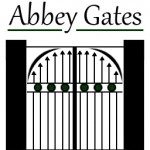In Scotland during the 18th and 19th century, cast iron was a popular material used in the architectural industry. Due to the technological advancements that occurred in that time period, cast iron was not only being used in the building of everyday structures using iron beams, pillars and columns, but also for the manufacturing of balconies, stair rails, gates and railings. In that time period, the use of iron for decorative gates, railings and other great metal work pieces was known to add character to any home or commercial property. The purpose of this article is to advise property owners in Scotland how to properly maintain the look and caliber of their iron gates and railings or any other decorative iron structures they are in ownership of.
Identify your metal
In Scotland, iron gates and railings where usually made from cast iron instead of wrought iron. One difference between wrought and cast iron is that wrought iron is worked with tools and cast iron is put into a mold to take shape. Cast-iron usually has a two-dimensional look and most cast iron pieces have repeating patters due to an increased efficiency provided by the ability to mold the molten metal rather than shape it manually with tools. Although wrought iron gates are very rare in Scotland, there may still be a chance you have a set, so take notice of any alterations in pattern, as these types of gates and railings were manipulated by an actual craftsman and not by a mold and although it took a tremendous amount of talent to craft these gates and railings, it is impossible to achieve the same perfection as a mold could make.
Is the metal corroded?
Cast iron corrodes when it is exposed to air, water, acids and salts. Below I have listed some examples of how iron can corrode:
- ‘Pitting’ may have occurred in your iron, this means the surface is uneven due to rusting.
- Rust staining may have also occurred on the irons surface.
- Paint may start ‘blistering’ which means that corrosion is happening underneath the paint. This may also indicate the wrong type of paint was used for covering the metal and when subjected to the constant freezing and thawing process as well as acidic rain this can also cause blistering.
How can I stop my iron gates and railings corroding in the future?
- Always keep up to date with maintenance by checking the gates for any of the above. all it takes is a five minute scan over the gate every few months
- Galvanize the gate surface (a layer of zinc protecting the iron from corroding)
- Ensure the gate has been thoroughly cleaned before painting as an UN-flush surface is just asking for accidental chips and flakes
- Don’t apply the paint too thick, apply thin layers instead of one thick layer
- Unstable and unsupported masonry can cause iron to crack
- Make sure joints and holes are sealed as the water or dirt hording within them can cause corrosion
- Remove plant growth, as like unsealed joints and holes, plants can be a warning that their are water holes helping the plant to grow which can cause small amounts of corrosion
- Make sure your welding contractor does great quality work
- Make sure the original design and manufacture of the gate is of great quality
How can I fix or clean my corroded, rusty gates?
I would always recommend seeking the help of a professional gate maintenance expert, but you can use these measures below if you think you can achieve the results yourself.
- Make sure you protect any wood, stone or paving the gate is connected to or sitting on
- Use a steel wool or steel brush to scrape off any rust. Remember to not use any oils or other lubricants when doing this as when the rust is scrapped off by the brush, the oil will allow the rust to stick to the surface and cause further abrasive damage. What you need to do is brush the excess rust off periodically
- Use white vinegar to remove small amounts of rust by soaking a cloth in the vinegar, rub the iron object then rinse off the gate or railings with clean water
- Use a power sander for any minor areas of rust remaining on the metal object, you can use a power sander to remove the excess. Use extreme caution when using any electrical tools that could potentially cause injury
Resources
*Historic Scotland
